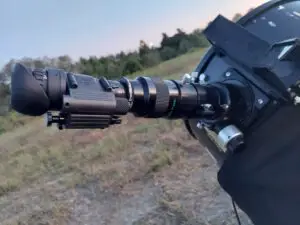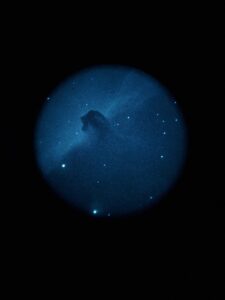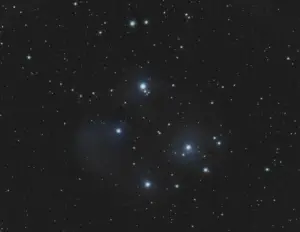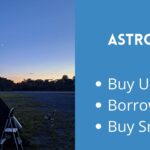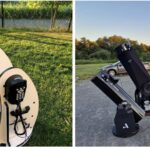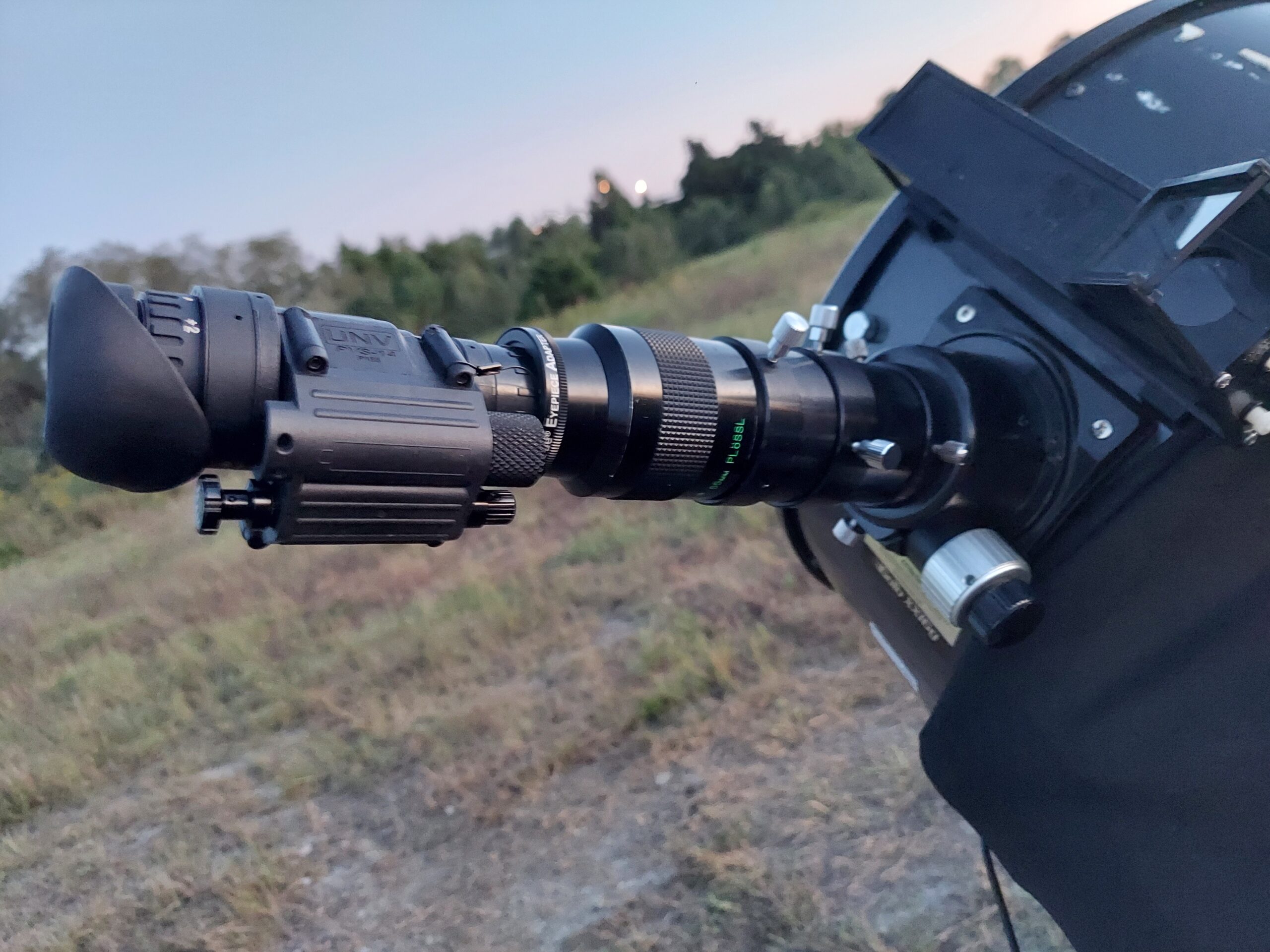
What’s So Special About Eyepieces?
Everyone loves eyepieces.
Telescopes are neat and all, but visual astronomers really go crazy for eyepieces. They’re shiny, they’re collectible, and there are a ton to choose from.
Eyepieces are necessary components for astronomy. By switching between eyepieces of different focal lengths, you can achieve different magnifications through your telescope.
Telescopes often come with one or two basic eyepieces to get your started, but most telescope users will soon want to add one or two additional eyepieces to their kit.
The main reason for wanting to add a few more eyepieces is usually higher magnification. But eyepieces do much more than magnify.
They are your window to the universe, the part of the telescope that you interact with directly.
Color rendition, clarity, definition, width of field and viewing comfort are all impacted by the eyepiece, and it is for these reasons, not magnification, that premium eyepieces are a hot commodity.
What Are the Differences Between Budget and Premium Eyepieces?
The price of an eyepiece depends on several factors. Focal length, field of view, coatings and complexity all impact the cost.
Eyepieces with long focal lengths tend to have larger lenses and usually cost a bit more than short focal lengths. The same goes for eyepieces with a wide apparent field of view.
We can loosely classify eyepieces into five categories:
Low-End Eyepieces Are Under $50
Budget Eyepieces Cost Under $100
Mid-Grade Are Around $100-$200
Premium Range From $200-$300
While Ultra-Premium Models Are $300 and up—sometimes way up.
I have examples of each type below, and I recommend the $100 – $200 range to really see a difference when you upgrade.
So what do you get for all those extra dollars?
Optical Quality
Premium eyepieces tend to use more expensive glass, particularly in the very high-end models.
They might also have better coatings and blackened lens edges.
The optical design itself will be superior to lower-end models. In principle, these improvements will lead to increased contrast and brightness, and well as improved sharpness toward the edge of the field.
They will also reduce aberrations like ghosting and lateral color.
Fit and Finish
Premium eyepieces are just built better.
This is especially true of ultra-premium models like Delos or Pentax XW. The quality of the component parts is immediately obvious when you examine the eyepiece.
Mechanical parts such as twist-up eyecups are smoother and more precise.
Width of Field
Premium eyepieces often have super-wide or ultra-wide fields of view.
This is especially important for owners of manually-driven scopes, who must recenter the object as it drifts out of view due to Earth’s rotation. While low-end eyepieces are often restricted to 40 or 50 degrees, and some budget designs offer as much as 65 degrees, premium eyepieces push this figure to 100 degrees or more.
Eye Relief
Though this is not a given, many premium eyepieces provide long eye relief in addition to a wide field.
This can make observing more comfortable, particularly for eyeglass wearers, but not everyone wants or needs this feature. It comes down to personal preference.
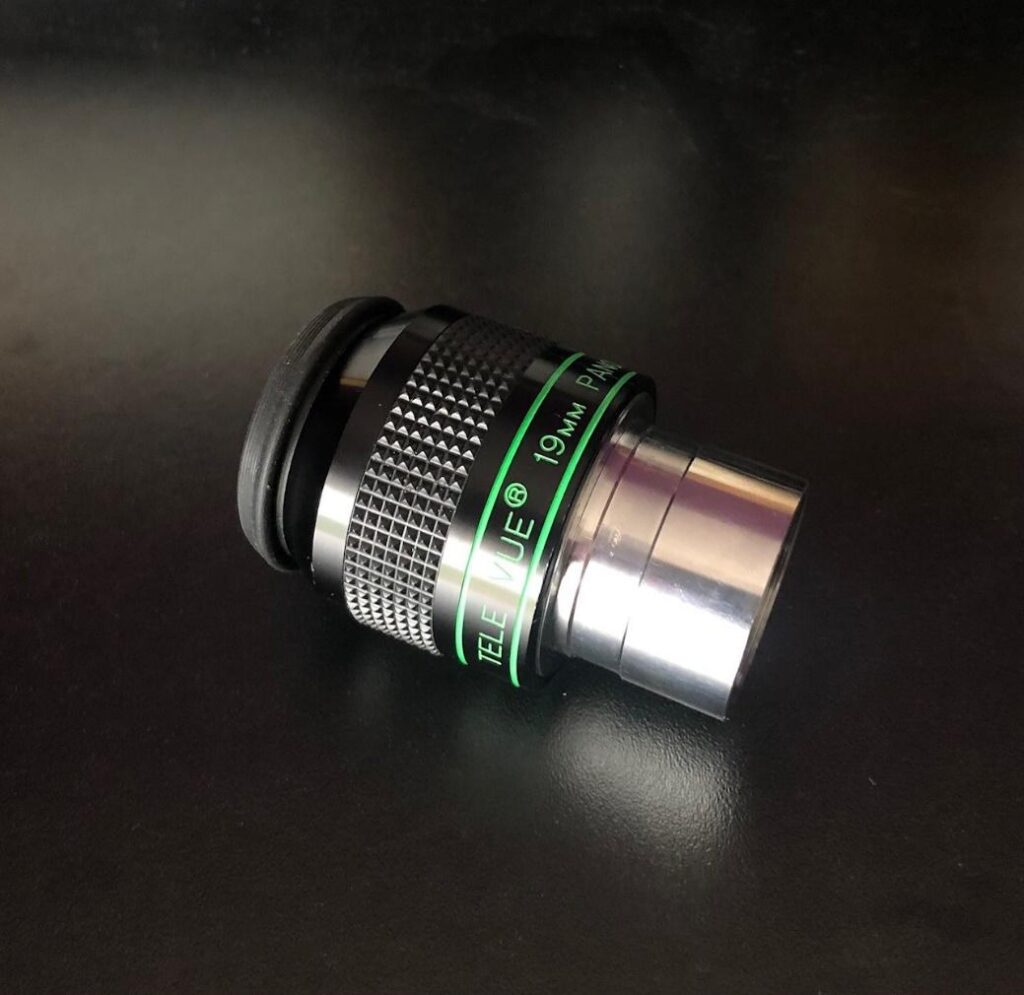
What are Some Examples of Budget and Premium Eyepieces?
Low-end eyepieces are sold under most major brand names and as well as a host of lesser brands.
Their optical designs are often Kellner, Ramsden, or Huygens, designated by the letters K, R, and H on the eyepiece barrel. Occasionally they might be Plossl.
They are lightweight, with thin metal barrels and plastic housing around the lenses. Optical coatings are usually minimal. Field of view is limited, and eye relief can be tight on shorter focal lengths.
I would never suggest that anyone spends extra money on such eyepieces, but this is not to say that they are altogether useless.
You can get fine views of the moon, planets, and some bright deep-sky objects through such an eyepiece. If you already own a couple of these, there is no harm in putting them to use.
Budget eyepieces are a small step above the low-end and are sometimes included with telescope kits.
These include mass-produced plossls such as Orion Sirius and Celestron Omni, wide-angle Erfles like the Meade QX or Antares W70, and other wide-angle designs like the ubiquitous “gold line” sold under a variety of brand names.
These models generally offer better build quality and wider fields than low-end eyepieces, but they do come with limitations.
I found the 25mm Sirius plossl a fine starter eyepiece, but the 10mm felt too cramped for high-powered views.
The 6mm Orion Expanse (a version of the “gold line” series) had a nice wide field but exhibited major ghosting on the moon and planets, a non-starter for a planetary eyepiece but probably fine for deep-sky work.
The Erfle designs mentioned above work well at long focal ratios, but if your scope is much faster than f/7 the views will not be very sharp.
Mid-grade eyepieces are probably the best place to start when looking at upgrading. There are many to choose from according to your needs.
They generally come with wider fields and longer eye relief than comparable plossl models, as well as good build quality.
Xcel LX, Meade HD60, and Astro Tech Paradigm are three examples, but there are similar models produced under a variety of brand names and new ones arrive every year.
At long focal lengths, eyepieces like the Orion Q70 and William Optics SWAN can provide wide, sweeping views of the star fields and serve as wonderful finder eyepieces.
If you stick with the hobby for a while, you will eventually want some premium eyepieces.
Here you can find designs with long eye relief and flat fields of view, such as Tele Vue DeLite and Celestron Edge HD, which create immersive, comfortable views with moderately wide fields.
This category is also the entry into ultra-wide designs like Celestron Luminos and Explore Scientific 82-degree series. These designs are mostly less-expensive versions of the models we’ll discuss next.

Ultra-premium eyepieces are the best you can get.
Tele Vue Nagler and Delos, Baader Morpheus, and Pentax XW are some of the most highly-recommended models around. These eyepieces offer the sharpest fields with the best contrast, often with long eye relief and impeccable build quality.
If you use a Dosbonian with a focal ratio below f/6, they will also offer superior edge-of-field sharpness compared to premium and mid-grade models.
At the very top of the heap comes the 100-degree designs, namely the Tele Vue Ethos and some copycat models from various companies. Owning one of these can be a bucket list item for many astronomers.
Do Eyepieces Really Make a Big Difference?
Not only do quality eyepieces improve the quality of your view, they improve the whole experience of using the telescope.
The goal is to be immersed in the view, to forget about the equipment. This is hard to achieve when you are straining to see through a tiny lens.


If you own a manually-driven telescope, investing in super-wide or ultra-wide designs makes sense. It will be easier to locate objects and they will remain in view for longer.
With a GoTo telescope this is less critical; you can focus instead on finding the most comfortable eyepieces with long eye relief and sharp, contrasty views.
Even a small upgrade to your eyepieces can make a big impact on your observing experience.
But ultimately, eyepieces are highly subjective.
Some people don’t want long eye relief; some don’t enjoy ultra-wide views, where you need to scan around with your eye to see the entire thing. It can be hard to know what works for you until you try some out.
The good news is that the used market is strong and you can always sell the ones you don’t like, without taking a big loss. This is especially true for premium models.
About Magnification
Magnification is an important part of amateur astronomy, but not quite as important as you think.
Resist the urge to immediately buy an eyepiece to provide maximum magnification, as you will hardly ever use it. Refer to this article on exit pupil to help guide your eyepiece purchases.

